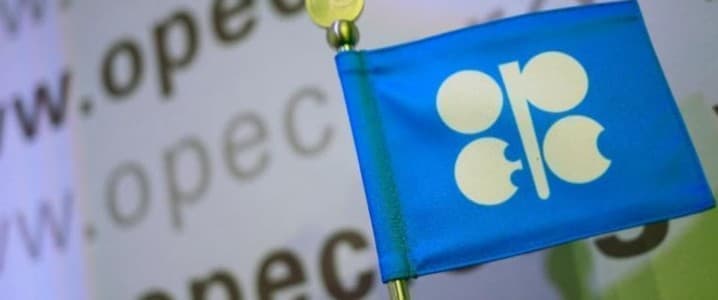For over two years, OPEC and its partners from Central Asia, led by Russia, tried to push oil prices higher by withholding oil supply. Some did it more successfully than others. Saudi Arabia especially excelled at curbing supply—to no avail. Factors outside OPEC+’s control caused prices to slide lower and stay lower. And OPEC+ has now come to terms with this, it seems. For the time being.
“You can’t scream into the storm forever,” Bill Farren-Price, senior research fellow at the Oxford Energy Institute, told the Financial Times this week. “They’re good at tweaking and fine-tuning balances, but they can’t push against a whirlwind force like the macro downturn that seems to be under way,” Farren-Price added.
To be fair, the downturn that the analyst refers to is more of a matter of expectation rather than a fact. The U.S. president’s tariff barrage against trade partners sparked this expectation, and everyone has gotten on board with it, revising global GDP growth forecasts and, of course, international oil price outlooks. The revisions were so many and came out in such numbers that pretty much everyone assumed that the worst fallout of the tariff war will inevitably materialize. So OPEC+ stopped fighting.
Some observers believe the Saudis were trying to please President Trump, who has repeatedly said he would like oil prices to be lower rather than higher, despite the interests of his supporters and donors from the energy industry. That may be part of the reason why OPEC’s informal leader decided to stop pushing for production control. Yet teaching a lesson to production control violators should not be discarded as another part of the reason.
Related: OPEC+ Production Fell in April Despite Pledge to Start Hiking Output
Iraq and Kazakhstan had been overproducing for months and showed no signs they were going to change that, regardless of assurances to the contrary. Any leader would sooner or later get fed up with insubordination, and Saudi Arabia is no exception. Nor is this the first time it uses the flood-the-market approach to teach someone a lesson. But there’s a twist this time. There is no flooding, not really.
OPEC+ shocked oil market watchers when it said last month it would boost its combined supply by 411,000 bpd this month. Prices tanked, but OPEC+ did not bat an eye. On the contrary, it followed up with plans for another 411,000-bpd output hike in June. Prices went further down while the U.S. and Beijing tried to out-tariff each other. And then the Saudis raised their oil prices for Asia. This should have been the last thing for them to do during a time of seemingly chronic lower prices, but this is what they did. Then prices started climbing.
One reason for the reversal of the oil price rout was the news that OPEC+ actually produced less oil in April—when everyone had assumed overproducers would keep overproducing by even more. The other reason is that the U.S. and China started talking about tariffs and the talks produced results suggesting it won’t come to the worst of the worst. This is something that people familiar with President Trump’s general approach to politics have been saying for months but have received little attention. The approach: ask—or try—for something massive, while in reality being happy to get a fifth of that. It is working, too.
So, the tariff war might end before it really starts, and this is supporting oil prices. There was also the fresh news that U.S. inflation is not at all as bad as everyone seemed to expect—because of the tariffs and everything else the U.S. president does, it appears. But no, inflation in April inched up by a modest 0.2%, which was the lowest rate in two years, per Reuters, which made sure to note that uncertainty about the future remained.
Be that as it may, oil demand appears to be quite robust despite all the challenges that commentators like to fixate on in their media appearances—and lower oil prices are a big part of the reason. China has been importing more crude, with April flows at 11.69 million bpd. This was slightly down on March but up on April 2024 as the country’s refiners stocked up on the commodity while cheap. Asian oil imports overall are seen rising amid the price rout while it lasts.
So, OPEC+ seems to have picked the best time to stop forcing nature and let things take their course. The benchmarks have already recovered from the worst of the rout. Granted, Brent crude is still far from the levels it traded a year ago when it changed hands for over $80 per barrel. Yet it has rebounded from the lows it touched last month amid the most frantic coverage of the tariff spat and chances are it will keep rebounding along with WTI as U.S. drillers curb activity in anticipation of the price recovery. And OPEC+ can sit back and relax and wait for that recovery to push prices even higher.
By Irina Slav for Oilprice.com
More Top Reads From Oilprice.com

